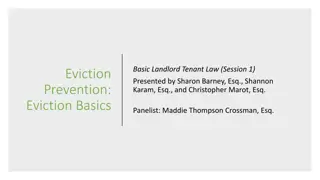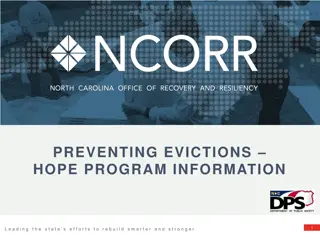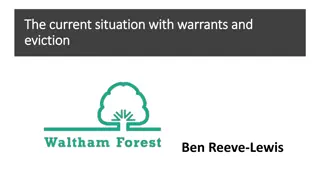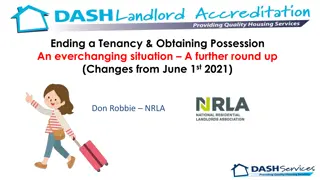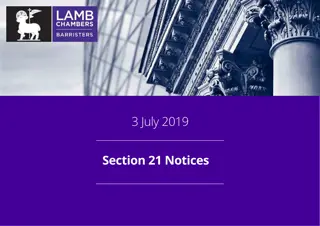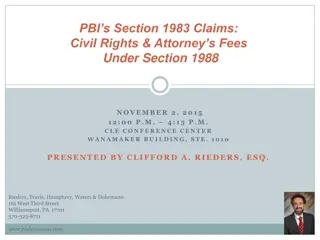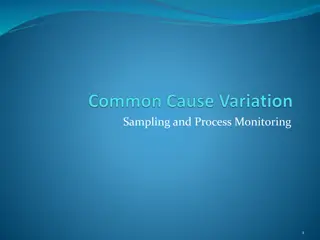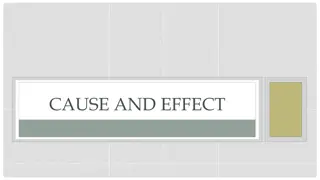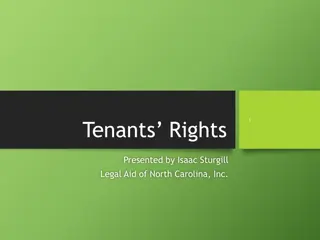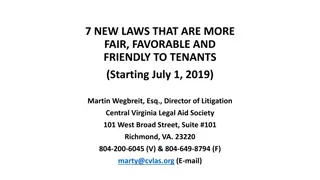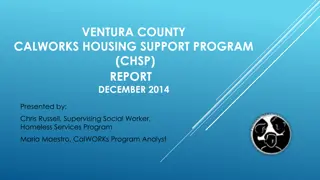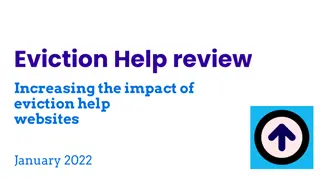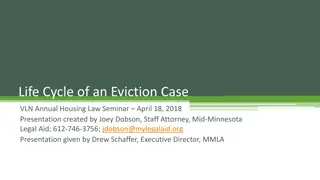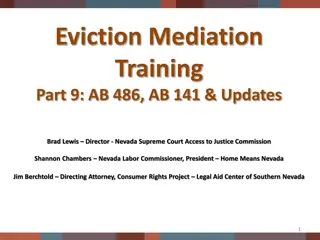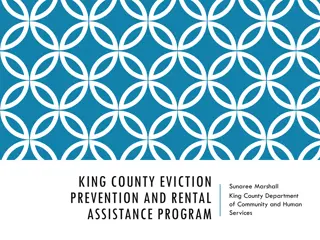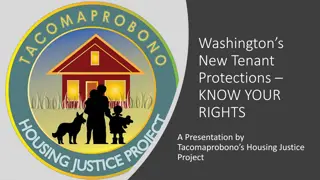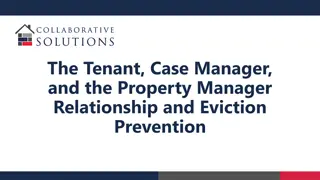Understanding Good Cause Eviction in the Section 42 Program
The Section 42 program balances tenant protections with the need to address lease non-compliance through the good cause eviction rule. This rule specifies valid reasons for eviction, emphasizes the importance of state and local laws, and outlines best practices for property managers to follow. It prohibits eviction based on discriminatory or retaliatory grounds. Managers must provide written notices and thorough documentation to support eviction actions.
Download Presentation

Please find below an Image/Link to download the presentation.
The content on the website is provided AS IS for your information and personal use only. It may not be sold, licensed, or shared on other websites without obtaining consent from the author. Download presentation by click this link. If you encounter any issues during the download, it is possible that the publisher has removed the file from their server.
E N D
Presentation Transcript
The Section 42 program is designed to provide tenant protections and (in most cases) to allow households to stay in place after move-in, even as their situations change. However, the program also recognizes that there will be times that management needs to terminate a lease and that managers need the same ability to deal with income-qualified households that are not complying with their lease terms as they would have with any other household. The result of these two seemingly conflicting forces the ideal of tenant protection and choice versus the reality of lease non-compliance is the good cause eviction rule. In a nutshell, good cause eviction means that property managers can never arbitrarily terminate a lease. Any termination must be for a documented and reasonable cause.
GOOD CAUSE So what constitutes good cause? Non-Payment of rent Destruction or damage to property Interference with other tenants Tenant fraud Intentional Deception Use of property for unlawful purpose Other violations of lease agreement
GOOD CAUSE IRS and 8823 Guidance says: Good cause is based on state and local law; Determined by the court; It s important to know state and local law; Check with the HFA or monitoring agency for any additional rules that apply.
Best Practices FIRST: Addressing the eviction process in writing Outlining actions that constitute good cause for termination of tenancy Discuss at initial occupancy Should be in the lease and any other rules and regulation documents Common examples should be cited, and; Include the appropriate including but not limited to language
Best Practices SECOND: Management should provide a written notice to the resident prior to beginning eviciton This notice should state that continued poor conduct will constitute a basis for future termination Regardless of the reason, the basis for good cause eviction must be documented in the resident file with copies of all notices and supporting documentation. The owner is responsible to be able to defend the eviction if challenged in court or questioned by NHD.
Invalid reasons for eviction Any criteria that would: Violate the Fair Housing Act Violate Section 42 general public use requirements Be because of a protected class status Otherwise be considered discriminatory Be considered retaliatory
Invalid reasons for eviction Increases in income after initial move-in: In 100% projects household remains qualified as long as it chooses to stay In mixed income buildings a household that has an increase in income is subject to the NAUR/140% rule BUT STILL CANNOT BE TERMINATED DUE TO THE INCREASE IN INCOME.
Final Cautions Make sure the decision is within the parameters of good cause Is DOCUMENTED, DOCUMENTED, DOCUMENTED Defendable (in court and with the HFA) Is not for a prohibited reason 1. 2. 3. 4.


